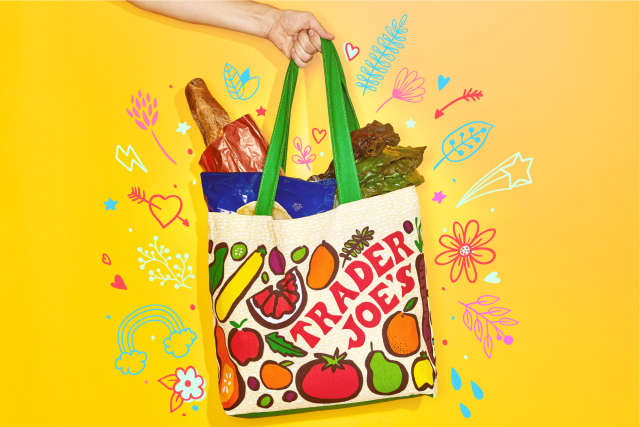This
post was originally published on
this sitehttp://chriskresser.com/

Carrageenan has faced serious scrutiny in recent years, since some animal studies suggest it can cause intestinal discomfort, ulcerations, and even cancer.
While the results of these studies are alarming at first glance, I believe that some of the concern surrounding them is unwarranted. Keep reading to find out more about this food additive and whether it’s healthy and safe to consume.
What Is Carrageenan?
Carrageenan is a food additive that’s commonly used as a stabilizer or thickening agent. It’s made up of an indigestible polysaccharide that comes from red algae. While carrageenan-rich seaweed has been a common gelling ingredient in some foods for centuries, modern food production techniques use an isolated, refined form of the additive—and that’s raised some concerns in the health community. (1)
There are two main forms of carrageenan that you might encounter: degraded, which is also called poligeenan, and undegraded. The undegraded variety is approved for food, while poligeenan is not.
Where You’re Likely to Find It
Packaged non-dairy milk is one of the most common sources for this additive. It’s often used to thicken up:
- Coconut milk
- Almond milk
- Other varieties of nut milk and non-dairy milk beverages
If you’ve given up dairy products for these alternatives, you’re probably increasing your intake of this thickener.
Is It Safe for You to Eat?
While there is a lot of lively debate around the safety and possible side effects of carrageenan, one detail is clear: We don’t need to eat this substance, and it doesn’t provide any health benefits.
Most nut milk manufacturers include it in the ingredients list just to improve the mouthfeel of the end product.
So, is it safe for you to eat it? The short answer is, unfortunately, that it’s difficult to tell at this point. While much has been made in the past about a possible link between carrageenan and cancer, I’m not convinced that it poses a real carcinogenic threat, for reasons I’ll explain below. There is, however, some evidence that it may cause intestinal problems for certain people.
In cases where it’s unclear if a certain substance is harmful or not, I subscribe to the precautionary principle. Since we don’t have evidence showing that it’s definitely safe to consume, and it doesn’t provide any boost to your health, try to avoid eating it regularly.
However, occasional exposure is probably nothing to be concerned about.
What You Need to Know about the Research
Many of the questions about this additive were raised in response to animal studies that seemed to suggest a link between carrageenan consumption and the formation of cancerous colon lesions and ulcerations. One 2001 review examined the results of around 45 studies before concluding that this additive had troubling “carcinogenic properties.” (2)
There is one important detail that often gets lost in the discussion, however: Many of these animal studies involved poligeenan, the degraded form of carrageenan that is not approved for use in our food supply. Poligeenan is not the additive you will find in coconut or almond milk, and it’s significantly more harmful to lab animals than carrageenan is. This lack of clarification between the two additives probably accounts for much of the concern over the safety of carrageenan.
In instances where researchers used food-grade carrageenan, not poligeenan, in their testing, the only time the additive seemed to accelerate tumor growth was when it was administered with a known carcinogen. That means the food-safe form of this additive has not been linked to cancer in laboratory testing.
The Possible Connection to Intestinal Problems
Some animal studies have also suggested a link between carrageenan and intestinal damage. Again, many of these studies used the poligeenan form of this thickener during experimentation.
One study examined the effects of poligeenan and carrageenan on rhesus monkeys. Researchers found that when poligeenan made up between 0.5 and 2 percent of the total diet for rhesus monkeys, the lab animals experienced hemorrhaging, diarrhea, and ulcerations. When carrageenan made up 1 to 3 percent of the diet, however, the rhesus monkeys did not experience any colonic changes. (3)
Unfortunately, there have been other animal studies suggesting a link between carrageenan, not poligeenan, and intestinal damage. However, there is significant variability between the results in each experiment.
That suggests that drawing conclusions about the safety of this substance may depend on the animal that consumes it.
According to the 2001 review I referenced above, one study using rats found that carrageenan caused:
- Epithelial cell loss (including cells lining the gut)
- Diarrhea
- Increased intestinal permeability, or leaky gut
In another study, carrageenan caused ulcers in the colon for guinea pigs, but there were no side effects for rats and hamsters. In yet another study, pigs showed abnormalities in their intestinal lining after consuming carrageenan, but there was no evidence of tumors or ulcerations.
And, in another rat-based study, researchers found no evidence of colon lesions or ulcerations after administering the additive for 90 days. (4)
Other Problems with the Existing Research
In several of these tests, the lab animals consumed this additive through their water supply, not their food. That method probably worsened the severity of the side effects the lab animals experienced. That’s because carrageenan interacts with protein molecules. Eating it as a component of solid food is generally much less harmful.
The lab animals in these studies also ended up consuming significantly more of this food additive than humans are likely to eat, as I pointed out above. Few people would ever be able to consume enough carrageenan to make up even 1 percent of their diet.
Given the details of these animal studies, it’s unclear how applicable or relevant the results are to humans.
Have Researchers Conducted Studies in Humans?
While researchers don’t run tests on human subjects for clear ethical reasons, we do have some data from in vitro experiments done on isolated epithelial cells from the intestines.
The results of these experiments do seem to support the idea that carrageenan can cause inflammation in the intestines.
However, since these experiments were done on cells isolated from the human body, it’s not immediately clear whether or not the data translates to a real-world setting.
Inflammation Is a Potential Risk
In one study, researchers noted pro-inflammatory activity in intestinal epithelial tissue exposed to the food additive; two indicators, or transcription factors, were expressed or “switched on.” (5) This seems to have been a protective response from the body. If either of the pro-inflammatory factors were suppressed, increased gut permeability resulted. Unfortunately, it isn’t clear whether this study involved poligeenan or not.
Two other studies echoed this one, both showing evidence that the additive triggered inflammation in isolated intestinal epithelial tissue. (6, 7)
Other Possible Side Effects on Human Cells
Other studies suggest that carrageenan can have even more wide-ranging and damaging effects on human cells, including cells in the tissue lining the gut.
For example, when researchers exposed human intestinal epithelium to the thickener, it had a negative impact on the vitality and functioning of the cell. (8)
In another study that also looked at the impact of exposure had on intestinal cells, researchers found that, even at very low concentrations, carrageenan led to:
- Cell cycle arrest
- Less cell proliferation
- Increased cell death (9)
Want to Avoid Carrageenan Altogether? Here’s How
If you are concerned about the safety of carrageenan, avoid it. Instead, choose nutritious, real foods over packaged products that contain this (and other potentially risky) additives.
Make Your Own Nut Milk (It’s Pretty Easy)
If you’re avoiding dairy products, crossing pre-packaged nut milk off your grocery list may sound like an impossible task. Not to worry—making homemade nut milk is a fairly simple process.
For detailed instructions, check out these recipes for homemade coconut milk and almond milk. Besides some basic ingredients, you’ll just need a blender, cheesecloth, and glass jars to store the final product.
These homemade drinks will stay fresh in the fridge for around four days.
Go Easy on the Almond Milk and Look for Additive-Free Options
Making homemade nut milk isn’t feasible for everyone, but that’s okay. Indulging in an occasional packaged drink is not likely to have a serious health impact. Look for brands that don’t include carrageenan in the final product. Check the ingredients first and otherwise to try to limit your exposure to products containing this thickener.
Now, I’d like to hear your opinions. Do you plan on steering clear of this food additive? Have you given up packaged options in favor of homemade nut milk? Tell me in the comment section below.
The post Carrageenan: Everything You Need to Know appeared first on Chris Kresser.













 For now classes are 6pm and 640pm at 2840 Wildwood st in the Boise Cloggers studio.
Book your class NOW!
click this ==>
For now classes are 6pm and 640pm at 2840 Wildwood st in the Boise Cloggers studio.
Book your class NOW!
click this ==>








